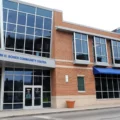By Sharon Kandris
It’s clear that hunger and food insecurity are growing problems in Central Indiana. We’ve recently partnered with two Central Indiana organizations (Northside Mission Ministry of Second Presbyterian Church and United Way of Central Indiana) to identify the gaps among existing resources as a starting point to developing a solution in Washington Township and Hancock County. Emerging out of a strategic planning process with Northside Mission Ministries, we’ve begun to develop a Community Network Model that utilizes collective impact to mitigate hunger.
In both communities,we identified that those in need of food often have many other needs: transportation, housing, employment, medical help, better nutrition, and fresh foods, to name a few. And in both initiatives, the organizations involved have resolved to do something to address the root causes of hunger.
Getting Out of Poverty
They want to help people out of the circumstances that are causing them to rely on local food support. They want them to be self-sufficient. In some instances, addressing the emergency needs of food, housing assistance, and clothing are all that’s needed to get a family past a time of hardship. In many instances, however, it will take much more than that. It will take better preparation for the workforce, getting and keeping good jobs, and increasing family stability though such things as better life skills and financial literacy.
The diagram below depicts the foundation and pillars of self-sufficiency – the framework that that Community Network Model uses.
Community Network Model
The Community Network Model brings together local organizations and service providers from many sectors to work collectively to form a community-wide solution to the problem.
Indy Hunger Network is making significant strides in developing a food network consisting of large food pantry partners that cover all of Marion County (approximately one in each township and now one in Hancock County). IHN should be applauded for its tremendous accomplishments in such a short time.
But this macro-level network is not enough – local organizations need to establish networks at the micro level and dig even deeper. The Community Network Model looks within a community for the existing supports to collaborate with intentionality about addressing the food resource gaps that exist – gaps in availability, gaps in accessibility, and geographic gaps. And it goes beyond food to address the underlying causes of hunger. In this deeper model, food is one node of a bigger network.
On the food “node,” food providers coordinate to address the gaps. For example, they make sure there are food options available at all times – days, evenings, weekdays, and weekends. Other (non-food provider) organizations contribute their assets to the cause as well – whether it’s a local church providing volunteers at the pantries or a nonprofit offering its van to transport people to and from a pantry to address the issue of accessibility.
Other nodes of the network focus on education, job training, health, and other issues that address the root causes of hunger.
One organization takes the responsibility of convener or coordinator, making sure that the coordination happens within each node and that all of these nodes work together to move individuals toward self-sufficiency and out of poverty and times of hardship. Individuals with a food need, for example, will be shepherded to organizations in the relevant nodes of the network to get the supports they need in a coordinated fashion, as they are willing.
The following graphic illustrates the network model with four of the nodes (education, health, food, and rent assistance) to demonstrate the concept, but the full network would include additional nodes such as family stability and employment.
An important early step in building a successful network model is conducting an asset inventory to see what skills, resources, and capacities exist within organizations that are interested in helping address the problem. Then work together to build this network of resources. It will take time, but the time to start is now.
The Keys to Bigger Impact
- Use data to inform your understanding of the situation and guide your process for developing solutions.
- Consider all of the assets within your community, not just the food providers, as part of the solution.
- Work together. It’s the power of collective impact that allows you to make a bigger difference by working intentionally toward the same goal instead of working in silos.
- Think creatively. Don’t let barriers, including funding, stop you.
With some coordination and cooperation, local organizations can make a bigger impact on addressing hunger in our community.
Sharon Kandris is the Director of SAVI and Community Informatics at The Polis Center.









